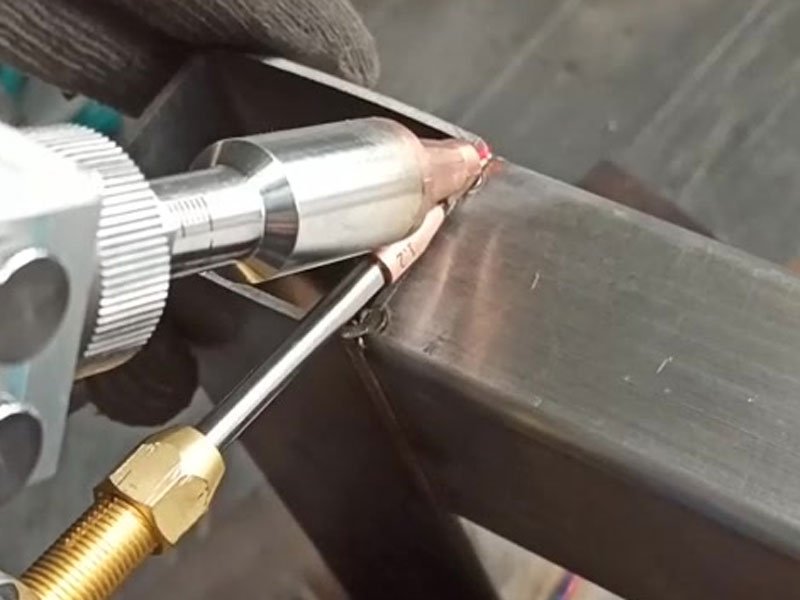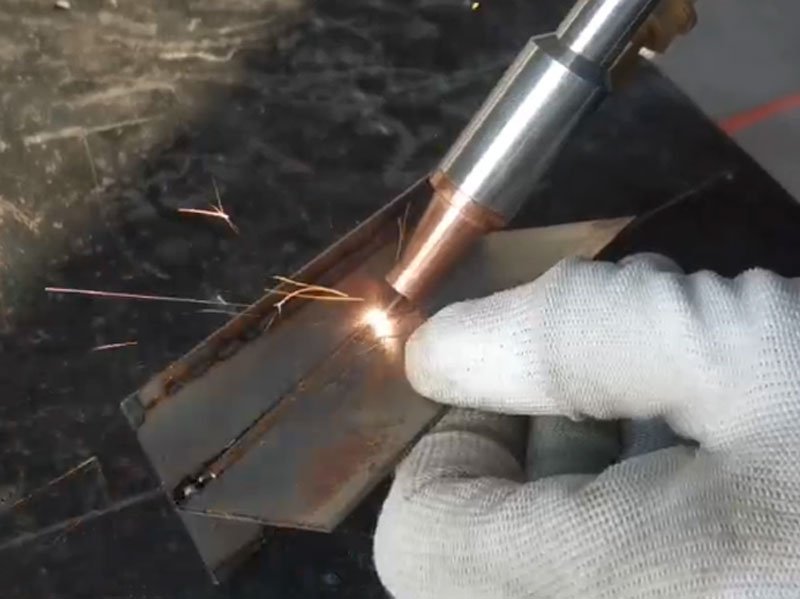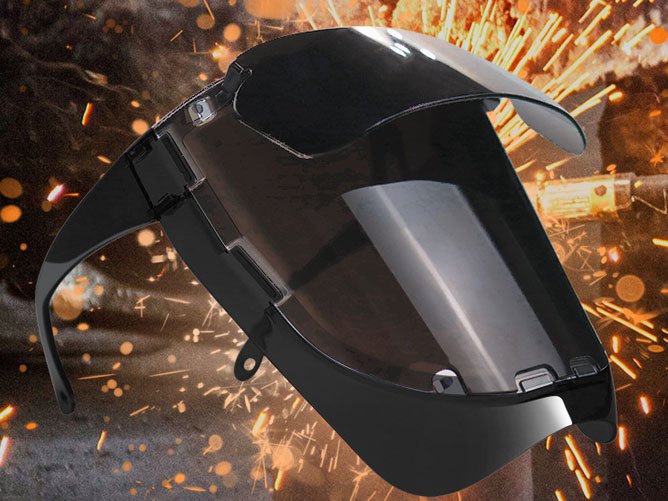The rapid development of laser welding technology is favored by people because of the depth, penetration and non-deformation of welding. This article will focus on describing laser welding stainless steel.

What is Stainless Steel
Stainless steel is a metal alloy known for its resistance to rust and corrosion.Stainless steel is a corrosion-resistant alloy of iron, chromium, and in some cases, nickel, and other metals. It is known for its recyclability, environmental neutrality, longevity, aesthetics, hygienic properties, ease of maintenance, durability, and versatility. Stainless steel forms a passive chromium oxide layer on its surface when in contact with oxygen, providing self-healing protection.
Characteristics of stainless steel:
Composition: Mostly iron, but with at least 10.5% chromium. Chromium forms a thin, invisible layer of chromium oxide on the surface, protecting the steel from further oxidation (rusting).
Other Elements: Nickel is often added to enhance corrosion resistance and improve workability. Molybdenum also provides additional strength in harsher environments.
Corrosion Resistance: The chromium content makes it highly resistant to rust and staining, even in humid environments. This makes it a popular choice for applications such as cookware, tableware and architectural elements.
How laser welding stainless steel sheet
Stainless steel grade type:
304: General grade, widely used because of its economy and good corrosion resistance.
316L: Better corrosion resistance than 304, especially in environments containing chloride (such as salt water). “L” indicates lower carbon content, improving weldability.
Stainless steel characteristics:
- Corrosion Resistant: Resists rust and stains, making it ideal for a variety of applications.
- Durability: Strong enough to withstand high temperatures.
- Hygienic: Easy to clean and maintain, suitable for food contact surfaces.
- Aesthetics: Has a stylish, modern appearance.
Laser welding of stainless steel type:
- Conductive welding : for thin plates
- Deep penetration welding : suitable for thicker materials
- Laser beam welding

Best stainless steel for laser welding
DOWELL China laser welding machine manufacturer, mass customization of handheld laser welding equipment, welding brass, stainless steel, steel, carbon steel, aluminum plates and other materials, can be customized 1000w 1500w 2000w 3000w to meet your different needs.
Advantages of Stainless Steel Welding Machines
- Concentrated heat source: The laser beam provides a more concentrated heat source than other welding methods, such as arc welding. This means that the heat only affects a narrow area of the material, minimizing deformation of the surrounding area.
- Rapid solidification and narrow HAZ: The rapid melting and solidification process of laser welding creates a narrow heat-affected zone (HAZ). Since many of the key properties of stainless steel, such as corrosion resistance and mechanical strength, depend on its microstructure, the minimization of HAZ is crucial. Laser welding preserves these valuable properties of stainless steel through rapid solidification.
- Dissimilar metal welding: Laser welding is not only suitable for the same type of metal, but can also be used to join dissimilar metals such as stainless steel, such as aluminum, copper or titanium. However, it is important to note that material compatibility must be carefully considered.

Safety Precautions When Laser Welding Stainless Steel
Take safety precautions:
The eyes are particularly vulnerable: laser radiation can cause permanent eye damage. Always wear laser safety glasses or goggles that comply with relevant standards such as BS EN 207:2017 to protect your eyes when operating.
Skin Protection: Wear flame-retardant clothing and gloves to prevent burns from laser radiation that may reach exposed skin.
Establish a safe workspace:
Dedicated laser welding chamber: An enclosed welding chamber with proper ventilation is critical. Walls, ceilings and windows should be constructed of laser-safe materials.
Laser Safety Viewing Window: Allows observation of the process without compromising safety.
High Performance Extraction System: Removes harmful fumes and pollutants.
Security interlocking entry door: Prevents unauthorized entry during laser operation.
Warning lights and alarms: Alert personnel to potential hazards.
Safety Training:
Warning Signs: Employers must display clear warning signs, provide comprehensive laser safety training, and ensure employees are using personal protective equipment (PPE) appropriately.
Safety regulations: Regular risk assessments and compliance with health and safety regulations, such as those set by the Health and Safety Executive (HSE), are vital.

Laser Welding Process: Step by Step
Preparation work:
Hygiene is crucial: workpieces should be thoroughly cleaned to remove impurities such as oil, grease or dust. This ensures a strong and clean weld.
Assembly and Alignment: Proper assembly means that two parts connect accurately. Alignment jigs or fixtures can be used to keep components firmly positioned during welding.
Design joints: Design joint configurations such as butt joints or lap joints according to different applications.
Fixtures Up: Throughout the arc, they are held in the correct position by fixtures or clamps
Beam focusing:
Power Delivery: By steering the laser beam onto a specific weld joint, aiming to concentrate the energy there. During this focusing process, the final quality of the weld, including its depth and width, is profoundly affected
Precision is paramount: Precise beam focusing ensures precise heating and melting of stainless steel at a given point.
Set parameters:
Process fine-tuning: When selecting appropriate laser power, speed, beam diameter, pulse duration (for pulse laser), repetition rate and other welding parameters,
Control energy: These parameters determine the amount of energy delivered, heat input and the size of the heat affected zone (HAZ).
Tailor-made approach: settings such as strength, penetration and minimum deformation, one must optimize to obtain the desired weld properties.
Welding process:
Fusion and Melting – When a focused laser beam melts metallic material along its path to make a weld, a molten pool forms along the joint groove
Strong and reliable joint – When the molten metal cools and solidifies, a strong and reliable weld is created between the two stainless steel pieces
Cooling and solidification:
Rapid Cooling: Laser welding promotes rapid solidification of molten metal, allowing for rapid heating and cooling cycles.
Reduced Tension: Proper cooling is critical to achieving the desired welding performance and minimizing residual stress within the joint.

FAQ
Recommended laser welding parameters for 316 stainless steel
- Power Up for Penetration: High-quality welds in 316 stainless steel have been achieved at peak power of about 160 kW.
- Frequency for Control: A welding frequency of 9 Hz will allow effective control during the welding process itself.
- Speed Matters: The ideal welding speed to achieve good weld characteristics is around 3.33 mm/ms.
- Pulse Duration for Precision: It is recommended that the pulse duration be around 2.53 ms, especially when using pulsed lasers.
Common challenges faced when laser welding stainless steel pipes
- Hot Cracking: Austenitic stainless steels such as 316L may develop hot cracking due to liquefaction cracking and solidification issues during the welding process.
- Carbide Precipitation: Austenitic stainless steel faces carbide precipitation, where chromium joins the carbide structure. This phenomenon affects the performance of the welding joint and the hardness of the weld.
- Material Compatibility: When using laser welding to weld dissimilar metals, such as stainless steel with other materials such as aluminum alloys, copper alloys, or titanium alloys, ensuring material compatibility and selecting appropriate filler materials is crucial to avoid problems such as cracks and poor joint quality.
- Optimize welding parameters: Achieving high-quality laser welding on stainless steel pipes requires careful selection and optimization of welding parameters, laser power output, beam quality, pulse duration, frequency and welding speed.
What kind of gas is used for stainless steel laser welding?
Commonly used gases include argon, nitrogen, etc. Different gases have different advantages and disadvantages, and they need to be selected according to specific requirements when selecting.


